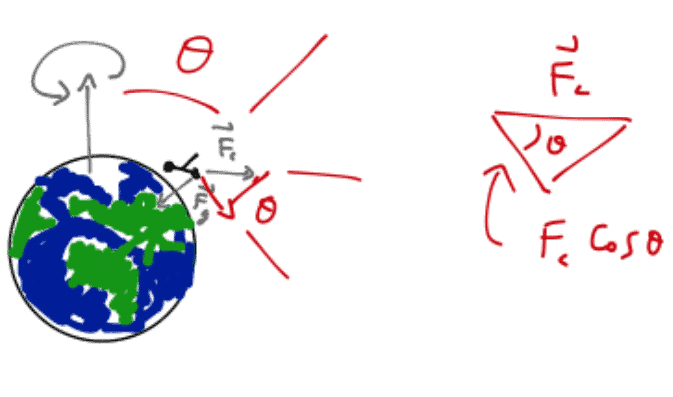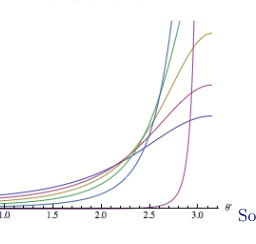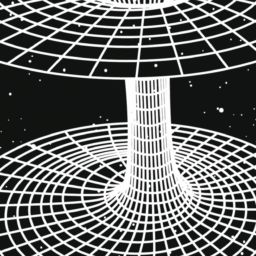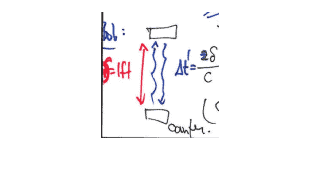MY-ASSIGNMENTEXPERT™可以为您提供my.uq.edu MATH4105 General Relativity广义相对论课程的代写代考和辅导服务!
这是昆士兰大学 广义相对论课程的代写成功案例。

MATH4105课程简介
In his book “Space-Time Structure,” Schrodinger says: “In Einstein’s theory of gravitation, matter and its dynamical interaction are based on the notion of an intrinsic geometric structure of the space-time continuum. The ideal aspiration, the ultimate aim, of the theory is not more and not less than this: A four-dimensional continuum endowed with a certain intrinsic geometrical structure, a structure that is subject to certain inherent purely geometrical laws, is to be an adequate model or picture of the ‘real world around us in space and time’ with all that it contains and including its total behaviour, the display of all events going on in it.”
Acceptance of this notion of “geometrizing” all of physics has waxed and waned since Einstein’s and Schrodinger’s time, but the striking achievements of Einstein’s ‘General Theory of relativity’ compel us to study both the theory and the mathematical structure upon which it is founded.
Prerequisites
Accordingly, the first half of the course will introduce the basic mathematical ideas of pseudo-Riemannian geometry: manifolds; tensors; connections; parallel transport; covariant differentiation; geodesics; curvature; differential forms; Bianchi identities; Ricci, Einstein and Weyl tensors.
By working through problems, the student will have the opportunity to acquire a basic working knowledge of these concepts, and should then have the background necessary for the second half of the course.
MATH4105 General Relativity HELP(EXAM HELP, ONLINE TUTOR)
Show that the half of the Maxwell equations
$$
0=\epsilon^{\mu \nu \rho \sigma} \partial_\nu F_{\rho \sigma}
$$
is invariant under the general coordinate transformation,
$$
x^\mu \mapsto \tilde{x}^\mu=f^\mu(x), \quad F_{\mu \nu}(x) \mapsto \tilde{F}{\mu \nu}(\tilde{x})=\frac{\partial x^\rho}{\partial \tilde{x}^\mu} \frac{\partial x^\sigma}{\partial \tilde{x}^\nu} F{\rho \sigma}(x)
$$
for an arbitrary $f^\mu(x)$ with non-zero Jacobian.
Let $J_\nu^\mu \equiv \frac{\partial x^\mu}{\partial \tilde{x}^\nu}$. By the chain rule, the derivative transforms as
$$
\partial_\nu=J_\nu^\mu \tilde{\partial}_\mu
$$
Notice that this is just like our discussion of Lorentz invariance of Maxwell’s equations – for the half with the $\epsilon$ tensor (the ones which would involve magnetic charge on the LHS were it present), we didn’t need any condition on $\Lambda$, and only to make the other half (which involve the metric $\eta_{\mu \nu}$ ) Lorentz invariant did we need a constraint on $\Lambda_\mu^\nu$. So $(9)$ is
$$
0=\epsilon^{\mu \nu \rho \sigma} J_\nu^{\nu^{\prime}} \tilde{\partial}{\nu^{\prime}}\left(J\rho^{\rho^{\prime}} J_\sigma^{\sigma^{\prime}} \tilde{F}{\rho^{\prime} \sigma^{\prime}}\right) $$ where $J\nu^\mu=\frac{\partial x^\mu}{\partial \tilde{x}^\nu}$. We should worry about the terms where the derivative hits the $J$ matrices, which depend on $x$. It is tempting to claim that
$$
\frac{\partial}{\partial \tilde{x}^\nu} J_\sigma^\rho=\frac{\partial x^\alpha}{\partial \tilde{x}^\nu} \frac{\partial}{\partial x^\alpha} \frac{\partial x^\rho}{\partial \tilde{x}^\sigma} \stackrel{?}{=} \frac{\partial x^\alpha}{\partial \tilde{x}^\nu} \frac{\partial}{\partial \tilde{x}^\sigma} \delta_\alpha^\rho=0
$$
However $^1$ : it is not true in general that partial derivatives in different coordinate systems commute with each other. For example, in polar coordinates in the plane,
$$
\partial_y\left(\frac{\partial x}{\partial r}\right)=\partial_y \cos \theta=\partial_y \frac{x}{\sqrt{x^2+y^2}} \neq 0
$$
The issue is that when we take a partial derivative $\partial_\mu$, we are holding fixed the other coordinates in the same coordinate system. However, it is true that the resulting terms are symmetric in $\rho \leftrightarrow \sigma$, and cancel when contracted with $\epsilon^{\mu \nu \rho \sigma}$, so we can ignore them and we have
$$
0=\epsilon^{\mu \nu \rho \sigma} J_\nu^{\nu^{\prime}} J_\rho^{\rho^{\prime}} J_\sigma^{\sigma^{\prime}} \tilde{\partial}{\nu^{\prime}} \tilde{F}{\rho^{\prime} \sigma^{\prime}}
$$
The Jacobian of the transformation $x \rightarrow \tilde{x}(x)$ is the determinant of the matrix $J_\nu^\mu$. So we can use the $4 \mathrm{~d}$ version of the relation you showed in problem 1 , which is
$$
\epsilon^{\mu \nu \rho \sigma} J_\mu^{\mu^{\prime}} J_\nu^{\nu^{\prime}} J_\rho^{\rho^{\prime}} J_\rho^{\rho^{\prime}}=\operatorname{det} J \epsilon^{\mu^{\prime} \nu^{\prime} \rho^{\prime} \sigma^{\prime}}
$$
So multiply the BHS of (10) by $J_\mu^{\mu^{\prime}}$ (it’s invertible by the assumption that the Jacobian is nonzero, so this is without loss of generality (WLOG)) to get:
$$
0=\epsilon^{\mu \nu \rho \sigma} J_\mu^{\nu^{\prime}} J_\nu^{\nu^{\prime}} J_\rho^{\rho^{\prime}} J_\sigma^{\sigma^{\prime}} \tilde{\partial}{\nu^{\prime}} \tilde{F}{\rho^{\prime} \sigma^{\prime}}=\operatorname{det} J \epsilon^{\mu^{\prime} \nu^{\prime} \rho^{\prime} \sigma^{\prime}} \tilde{\partial}{\nu^{\prime}} \tilde{F}{\rho^{\prime} \sigma^{\prime}}
$$
which up to the nonzero factor $\operatorname{det} J$ and the erasure of primes on the dummy variables is the original form of the equation.
What is the optimal latitude at which to perform the Eötvös experiment?
$\pi / 4$. The biggest effect happens when the centrifugal force (proportional to $\sin \theta$ in the horizontal direction, where $\theta$ is the polar angle) has the largest component normal to the gravitational force (towards the center of the earth). The projection onto the surface of the earth of this force is then $\cos \theta \sin \theta \propto \sin 2 \theta$ which is maximal at $\theta=\pi / 4$.
Show that the Poincaré group satisfies all the properties of a group. (That is: it has an identity, it is closed under the group law, it is associative, and every element has an inverse in the group.)
An element of the Poincare group $x^\mu \mapsto \Lambda_\nu^\mu x^\nu+a^\mu$ is labelled by $(\Lambda, a)$, with
$$
\Lambda_\mu^\rho \eta_{\rho \sigma} \Lambda_\nu^\sigma=\eta_{\mu \nu}
$$
and no constraint on $a$. The group law is composition:
$$
x^\mu \mapsto \Lambda_\nu^\mu x^\nu+a^\mu \mapsto \hat{\Lambda}\rho^\mu\left(\Lambda\nu^\rho x^\nu+a^\rho\right)
$$
The RHS here is another group element because $\hat{\Lambda}\rho^\mu a^\rho=\hat{a}^\rho$ is a new translation, and $$ \hat{\Lambda}\rho^\mu \Lambda_\nu^\rho
$$
also satisfies the defining relation (11) for a Lorentz transformation. The identity is $(\Lambda, a)=(\mathbb{1}, 0)$ – do nothing. The inverse is $(\Lambda, a)^{-1}=\left(\Lambda^{-1}, \Lambda^{-1}(-a)\right)$; notice that $\Lambda^{-1}$ exists by the derivation on page 21-22 of the lecture notes, from the defining relation (11). Also, these rules are associative because they come from matrix multiplication and addition.

MY-ASSIGNMENTEXPERT™可以为您提供MY.UQ.EDU MATH4105 GENERAL RELATIVITY广义相对论课程的代写代考和辅导服务!





